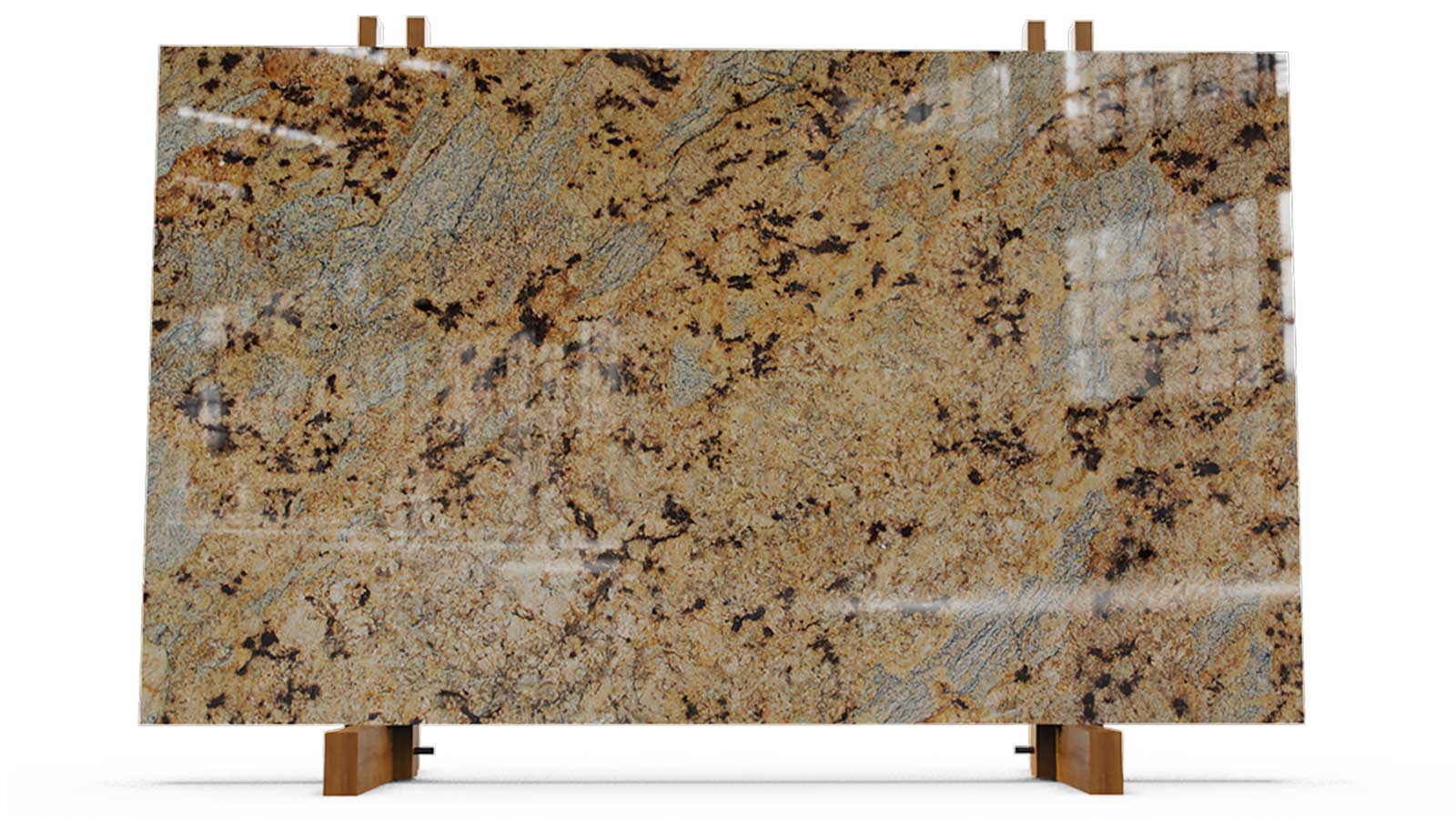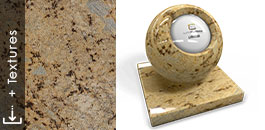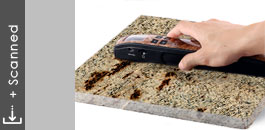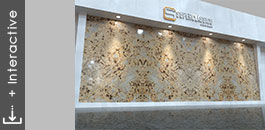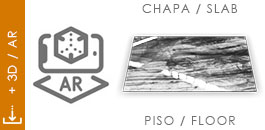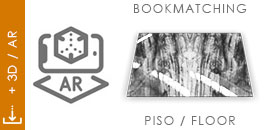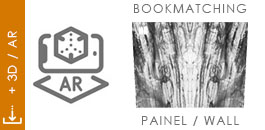Labareda – Exotic Brazilian Natural Granite
Labareda granite is a Brazilian natural stone that stands out for its exotic and elegant appearance. Originating from the Northeast of Minas Gerais, this granite impresses with its unique beauty combined with exceptional durability. With its distinct color palette and unmatched resistance, Labareda granite has become a popular choice for a variety of interior and exterior design applications. In this text, we will explore in detail the main characteristics of Labareda granite, its uses, extraction site, maintenance requirements, and recommended installation procedures.
Characteristics of Labareda Granite
Mineralogical Composition
Labareda granite is primarily composed of three essential minerals: quartz, feldspar, and biotite. These minerals impart notable properties of resistance and durability to the granite. Additionally, the presence of accessory minerals contributes to the unique visual characteristics of Labareda granite, creating distinctive patterns and veins that are unmistakable.
Texture
The texture of Labareda granite is granular, ranging from medium to coarse. This granular texture is one of the reasons why granite is so valued in construction and design applications, as it provides a robust surface that can withstand intensive use and adverse conditions without losing its structural integrity.
Color
The most impressive aspect of Labareda granite is undoubtedly its color. It features a predominantly light beige background, which serves as a base for wavy gray veins and irregularly distributed dark spots. These unique patterns resemble flames, justifying the name “Labareda.” The combination of colors and patterns creates a visual that can be both subtle and dramatic, depending on the lighting and viewing angle.
Hardness
Labareda granite is known for its high hardness, which is a fundamental characteristic of granitic rocks. This hardness makes the granite extremely resistant to scratches and impacts, ensuring that it maintains its appearance and functionality over time, even in high-traffic environments or under intense use.
Uses of Labareda Granite
Cladding
Due to its resistance to weathering and durability, Labareda granite is widely used in wall cladding, both internal and external. It can transform the appearance of a facade, giving it a sophisticated and robust look. Indoors, using Labareda granite on walls can create an impressive focal point, adding texture and color to the space.
Flooring
The durability and resistance of Labareda granite make it an ideal choice for flooring in high-traffic areas. Entry halls, kitchens, and commercial areas greatly benefit from the granite’s robustness, which can withstand daily wear without losing its beauty. Additionally, the texture of the granite provides a non-slip surface, increasing safety in busy areas.
Countertops
Labareda granite is a popular choice for kitchen and bathroom countertops due to its resistance and ease of cleaning. The non-porous surface of the granite resists stains and bacteria, making it hygienic and easy to maintain. Additionally, the natural beauty of Labareda granite adds a touch of elegance to any kitchen or bathroom.
Fireplaces and Sinks
The unique appearance and heat resistance of Labareda granite make it an excellent option for fireplaces and sinks. In fireplaces, the granite can withstand high temperatures without damage, while in sinks, its durability ensures a long service life, even under constant use of water and cleaning products.
Extraction Site
Labareda granite is extracted from a quarry located in the Northeast of Minas Gerais, Brazil. This region is known for its vast reserves of granitic rocks, and the Labareda quarry is no exception. The proximity of the reserves allows for efficient and sustainable extraction, ensuring that Labareda granite is available for projects worldwide.
Maintenance Requirements
Daily Cleaning
To maintain the appearance and durability of Labareda granite, it is recommended to perform daily cleaning using a soft, damp cloth with warm water and neutral soap. This simple and effective method removes dust and dirt without damaging the granite’s surface.
Specific Products
It is important to avoid using acidic or abrasive cleaning products, as these can damage the surface of Labareda granite. Specific cleaning products for natural stones are the best option to maintain the integrity and appearance of the granite.
Sealing
The application of a specific sealer for granites is recommended every 6 to 12 months. Sealing protects the granite’s surface against stains and liquid penetration, ensuring that the granite maintains its original appearance and durability over time.
Installation Procedures
Surface Preparation
Before installing Labareda granite, it is essential to ensure that the surface where it will be installed is level and clean. Any imperfection or dirt on the surface can compromise the installation and durability of the granite.
Accurate Measurements
Taking accurate measurements and detailed planning are crucial steps to ensure a perfect fit of Labareda granite. Inaccurate measurements can result in unnecessary cuts and material waste.
Fixation
For the fixation of Labareda granite, use a specific adhesive for granite and follow the manufacturer’s instructions for application. Choosing the correct adhesive is fundamental to ensure adhesion and durability of the installation.
Finishing
After installation, it is necessary to finish the edges and seal to ensure the material’s durability and aesthetics. A well-done finish not only improves the appearance of the granite but also contributes to its longevity.
Conclusion
Labareda granite is a sophisticated and versatile choice for a wide range of architectural and interior design projects. Its exotic beauty, combined with incomparable durability and resistance, make Labareda granite an ideal option for cladding, flooring, countertops, fireplaces, and sinks. Originating from the Northeast of Minas Gerais, this granite not only transforms spaces with its striking presence but also offers a practical and durable solution for various applications. With proper care and correct installation, Labareda granite can provide years of beauty and functionality, making it a valuable investment for any project.

Want to know more about this and other SuperClassico materials?
Ask our AI your question here!
BookMatching
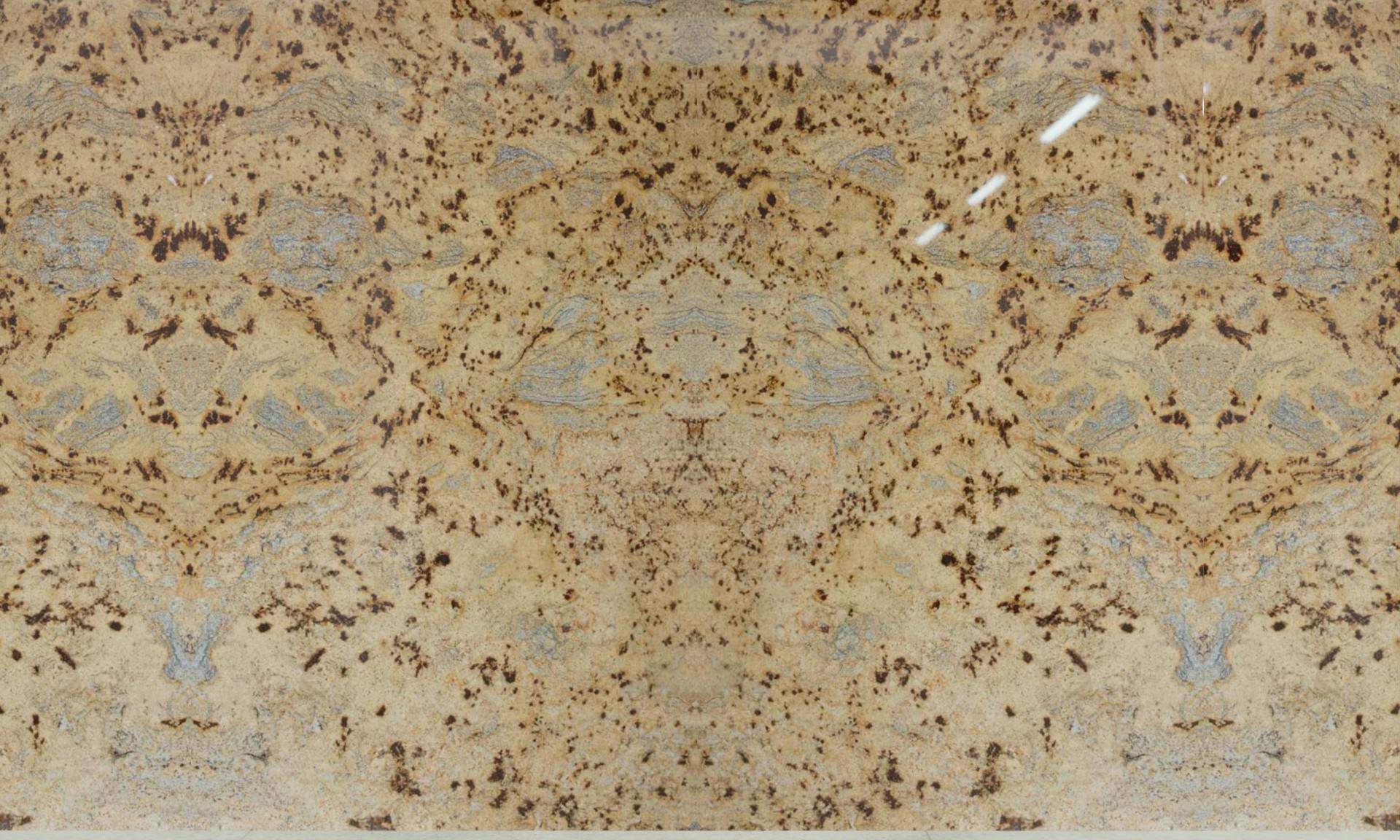 Vertical
Vertical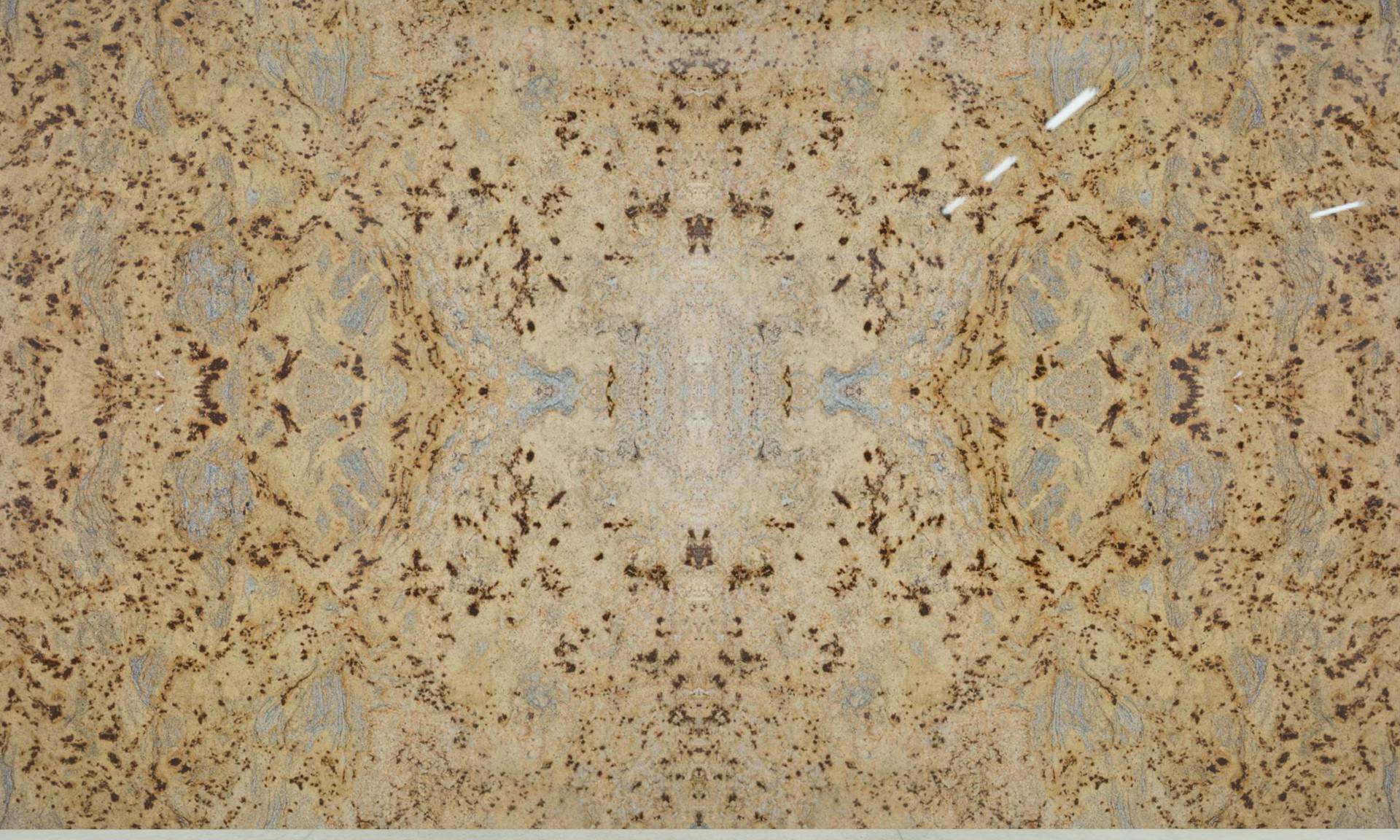 Horizontal
HorizontalFor Designers and Architects
| PETROGRAPHY CLASSIFICATION | GRANITE | |
| NORMA | TESTS | RESULTS |
| ABNT NBR 12766 | Water Absortion | 0,14% |
| ABNT NBR 12766 | Apparent Dry Density | 2623 kg/m³ |
| ABNT NBR 12767 | Compressive Strength83 | 78 mpa |
| ABNT NBR 12763 | Flexural Strength | 14,38 mpa |
| Abrasion Strength | 0,006 (cm²/cm³) | |
To simulate how a particular material would look as a floor, tabletop, or countertop in your home, use Augmented Reality technology on your smartphone. It’s easy! Just click on the “View in your space” button and you’ll be able to see the virtual object in your real environment. Try it now!
3D/AR View
Click on the CARDS below and choose different options to simulate the material with AR in your environment through your Smartphone’s camera.
Classification
Tipo: GRANITE
About
A Natural Stone of golden yellow color with brown dotted spots that resemble a leopard. This material associated with the colors of the design exalts the elegance of the environment.
Composition
Surface Finishings
Polished
It is the “shiny” surface that results in the plate when receiving the complete finish, that is, until the last grain. Depending on its composition, the polished material may have a higher or lower brightness intensity.
Brushed
It is the resultant surface in the sheet when it receives roughing treatment performed by steel brushes or synthetic materials. Different brushing models can be executed, with greater roughness, medium and few.
Soft Leather
It is the resultant surface in the sheet when it receives roughing treatment performed by steel brushes or synthetic materials. Carried out with a brush of low roughness, which gives it a lightly textured look like fabric.
Flamed
It is the resultant surface in the plate when it receives heat treatment (burned with torch specially developed for the function) that takes out small flakes of the same, making the surface slightly irregular producing the impression that it is rustic.
Honed
It is the resultant surface on the sheet when receiving abrasive grinding wheels up to the grain 120. This grain defines the surface finish limit either as anti-slip or even for the application of resin and subsequent polishing.
Leather Finish
It is the resultant surface in the sheet when it receives roughing treatment performed by steel brushes or synthetic materials. Depending on the type of brushes used you can still reproduce in some materials a surface with a design similar to natural leather.

